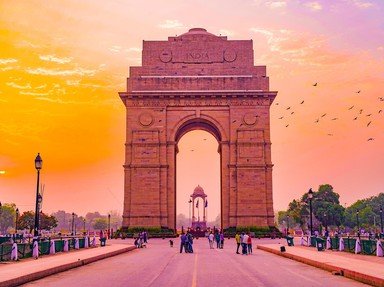Quiz Answer Key and Fun Facts
1. Qutb ud-Din Aibak was a Turkic general who conquered Delhi in 1193 and established the Delhi Sultanate which ruled north India and other parts for over 300 years. Which of these monuments did he commission?
2. Nanak was born in 1469 to Hindu merchants living near Lahore. Which of these did he establish?
3. In 1498, Vasco da Gama became the first European explorer to chart a sea route to India. Where along the Indian coastline did he land?
4. The First Battle of Panipat was fought in 1526 and is significant as it laid the foundation for the Mughal Empire in India. In which modern day Indian state is Panipat located?
5. Akbar, the grandson of Babur, was the third Emperor of the Mughal Empire. While his military conquests are well known, Akbar also sought to establish a new religion to create peace between his diverse subjects.
6. In 1600 an event occurred in distant Europe which would have far reaching effects on Indian history. Which of these was it?
7. Warren Hastings joined the British East India Company in 1750. From his initial position as a clerk, he worked his way up to become the first Governor-General of India. Hastings also took a keen interest in having which Indian epic translated to English?
8. A key event in India's history was the laying down of railway lines to improve transport in the large subcontinent. Which major city was the starting point for India's first commercial train journey?
9. Apart from economic and political changes, the presence and governance of the East India Company also brought about some desirable changes in the existing social system. Which of these was legalized by an act passed on 26 July 1856?
10. The Mutiny of 1857 was the first time that disparate regions of the subcontinent seemingly united to overthrow the East India Company. What was the most significant outcome of this rebellion?
Source: Author
zorba_scank
This quiz was reviewed by FunTrivia editor
bloomsby before going online.
Any errors found in FunTrivia content are routinely corrected through our feedback system.

